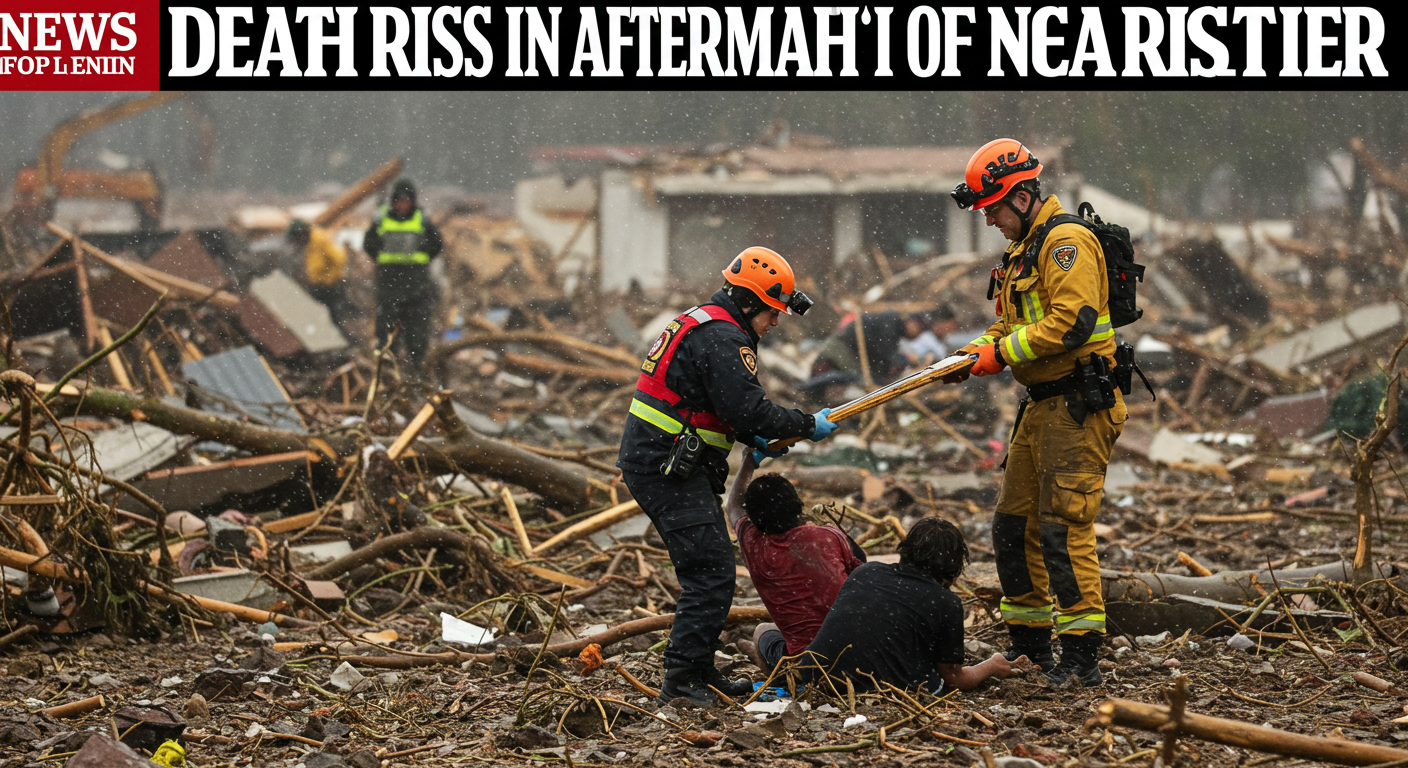In the wake of a recent devastating natural disaster, the death toll continues to rise as rescue teams and healthcare workers strive to assist those affected. Reports indicate a harrowing increase in fatalities in several regions, as the impact of the disaster becomes painfully evident. With communities grappling with the immediate consequences, the need for humanitarian aid and support has never been more urgent.
Understanding the Natural Disaster
Natural disasters encompass a range of catastrophic events, including earthquakes, floods, hurricanes, and wildfires. Each type presents unique challenges, but they all share the potential for mass destruction, significant loss of life, and long-term repercussions for infrastructure and communities. In the specific event we are examining, a high-magnitude earthquake struck a densely populated area, with subsequent aftershocks complicating rescue efforts.
Immediate Aftermath and Casualties
Initial reports indicated a substantial number of casualties, but as first responders continue their search for survivors, authorities are confirming that the death toll is steadily climbing. Hospitals are overwhelmed with the influx of injured individuals needing urgent care, while families face the unbearable reality of losing loved ones. The local government has mobilized resources, yet the scope of the disaster demands international assistance.
Factors Contributing to the Rising Death Toll
Several factors contribute to the increasing number of fatalities in the aftermath of natural disasters:
-
Infrastructure Damage: In many affected areas, buildings collapsed, trapping individuals beneath debris. Emergency responders face challenges in reaching remote locations due to damaged roadways. This infrastructure failure severely hinders rescue operations.
-
Healthcare System Strain: With hospitals nearing capacity, shortages of medical supplies and personnel exacerbate the situation. Patients with critical injuries may not receive timely treatment, leading to preventable deaths.
-
Delayed Emergency Response: In large-scale disasters, the initial response may be slow due to logistics, bureaucracy, or communication breakdowns. Each passing hour can mean the difference between life and death for those trapped or injured.
-
Psychological Impact: Survivors face not only physical injuries but also psychological trauma, which can lead to increased mortality from stress-related conditions. Prolonged exposure to trauma can weaken the immune system, making individuals more susceptible to illness.
- Inadequate Preparedness: Areas that are not well-prepared for such disasters often suffer the greatest losses. Economic constraints can inhibit the establishment of robust emergency plans, leading to devastating consequences when catastrophe strikes.
Community Responses and Resilience
Despite the overwhelming situation, stories of heroism and resilience emerge as communities come together to support one another. Neighbors banding together to search for missing individuals, local businesses offering shelter and food, and the tireless efforts of volunteers highlight the human spirit’s capacity to endure in times of crisis.
Role of Technology and Communication
Modern technology plays a critical role in both the rescue efforts and in informing the public during such disasters. Social media platforms serve as lifelines for missing persons, while apps designed for emergency response coordinate search efforts. Drones are being deployed to assess damage and locate individuals trapped in hard-to-reach areas, showcasing how innovative tools can aid in saving lives.
International Aid and Support
As the death toll rises, nations around the world mobilize resources to provide aid. Relief organizations and governments are dispatching medical teams, food supplies, and essential items to alleviate suffering. Diplomatic channels are working to streamline the process of getting aid to those who need it most urgently.
Long-Term Consequences
The long-term effects of such natural disasters go far beyond immediate casualties. Communities may face prolonged periods of recovery, impacting local economies and infrastructure. Displacement of families often leads to housing crises, while educational services for children may be disrupted for years to come.
The Importance of Preparedness
The rising death toll serves as a reminder of the importance of disaster readiness. Communities can mitigate risks by investing in early warning systems, establishing clear evacuation routes, and conducting regular disaster drills. Governments can play a pivotal role in educating citizens about emergency plans and ensuring that infrastructure is resilient to natural disasters.
Supporting Mental Health in Recovery
Just as physical injuries demand attention, the psychological impact of disasters on survivors must be adequately addressed. Mental health support services, including counseling and community programs, are vital in helping individuals and families cope with grief, loss, and trauma. Organizations specializing in trauma recovery can provide the essential support needed for healing.
Conclusion of Current Events
As the situation continues to evolve, the international community remains watchful, offering assistance and monitoring the conditions on the ground. The commitment to helping those in need exemplifies the solidarity that emerges during times of crisis. Lives have been irrevocably altered, yet the resilience demonstrated by affected communities embodies hope amidst despair.
Final Consideration
The tragic rise in the death toll serves as a painful wake-up call on the importance of response strategies and the need for continuous improvement in disaster preparedness. As recovery efforts unfold, lessons learned must pave the way for stronger, more resilient communities capable of facing future challenges.
This catastrophic event underscores the pressing need for a coordinated global response to natural disasters, fostering a sense of unity that transcends borders in the face of adversity.




